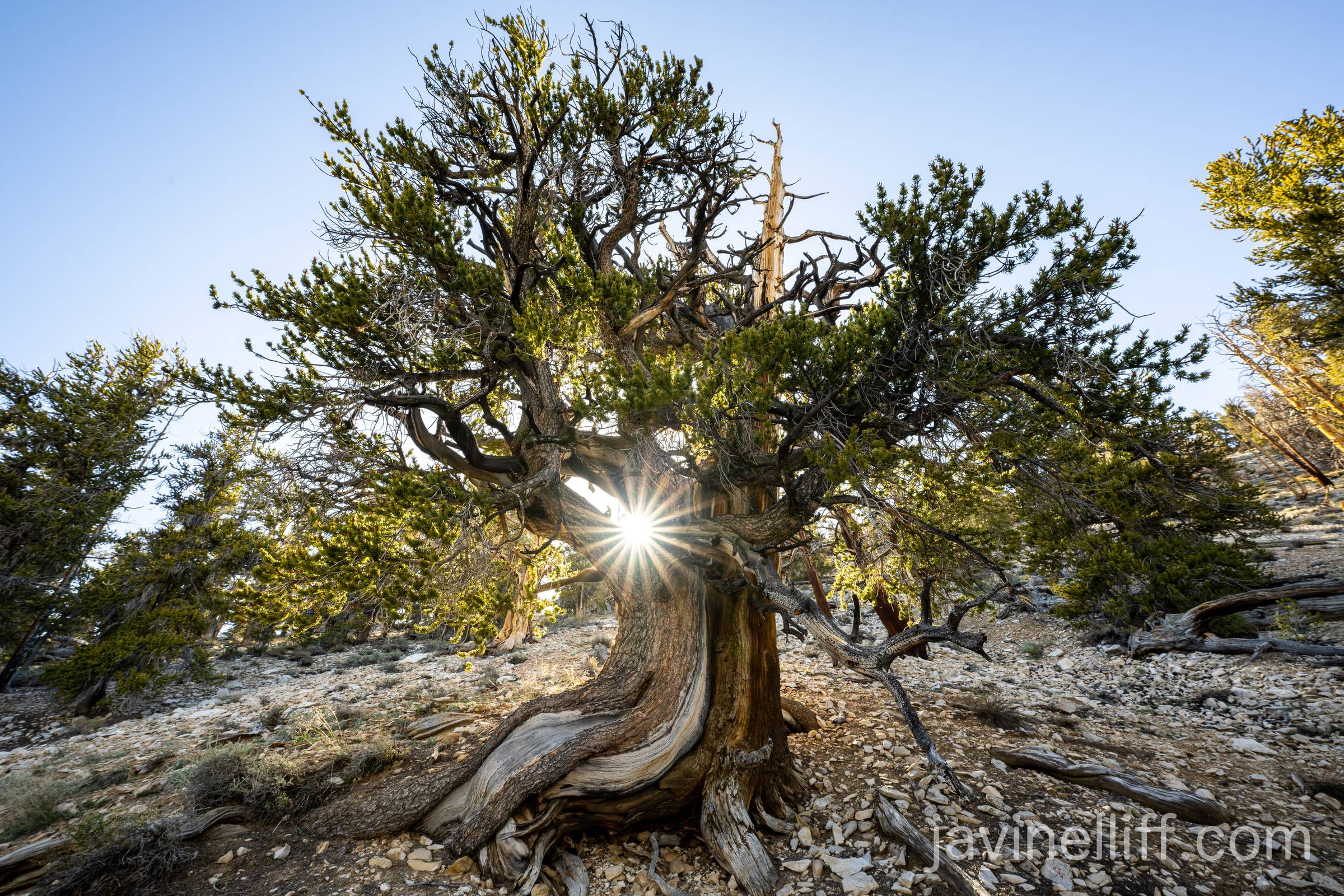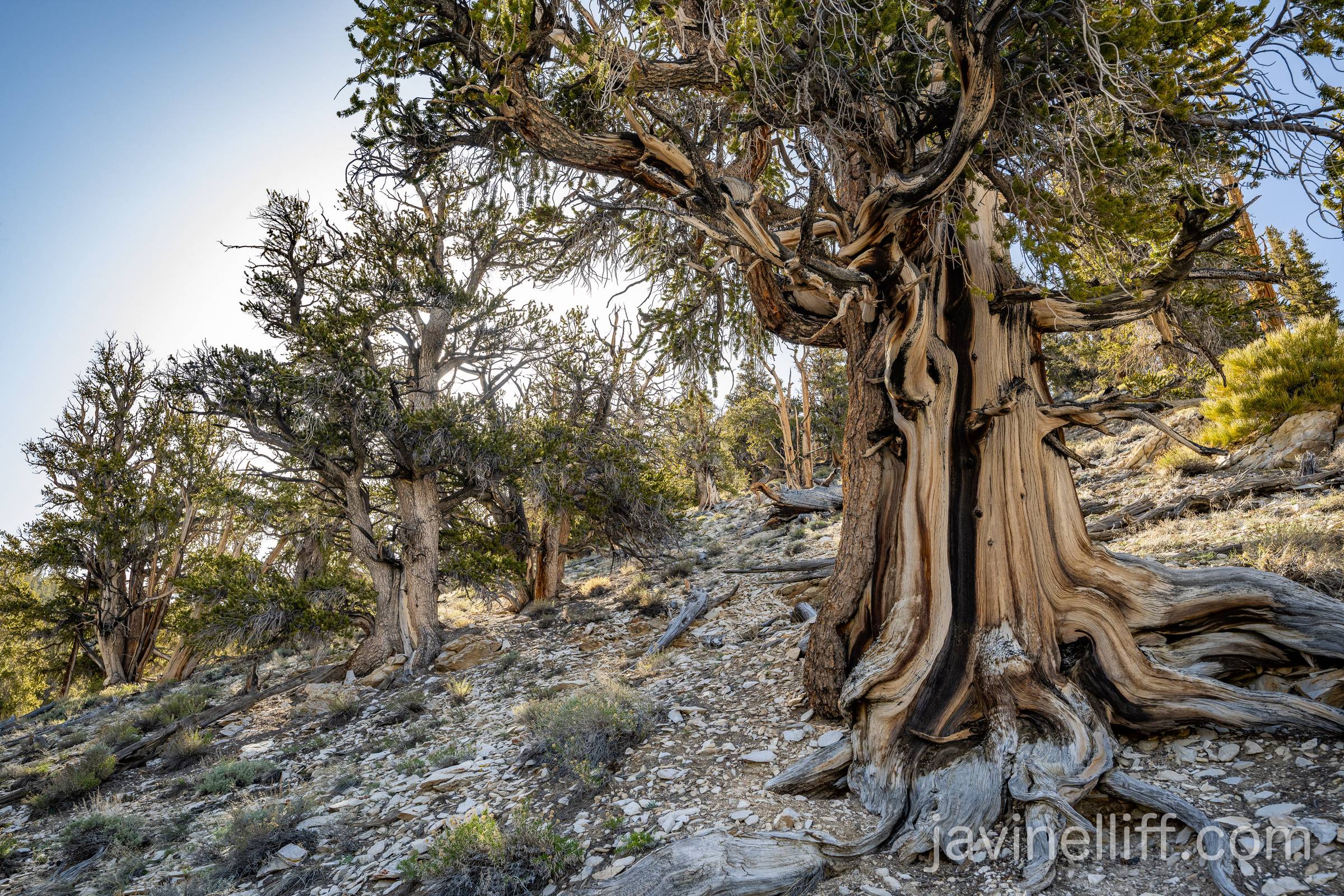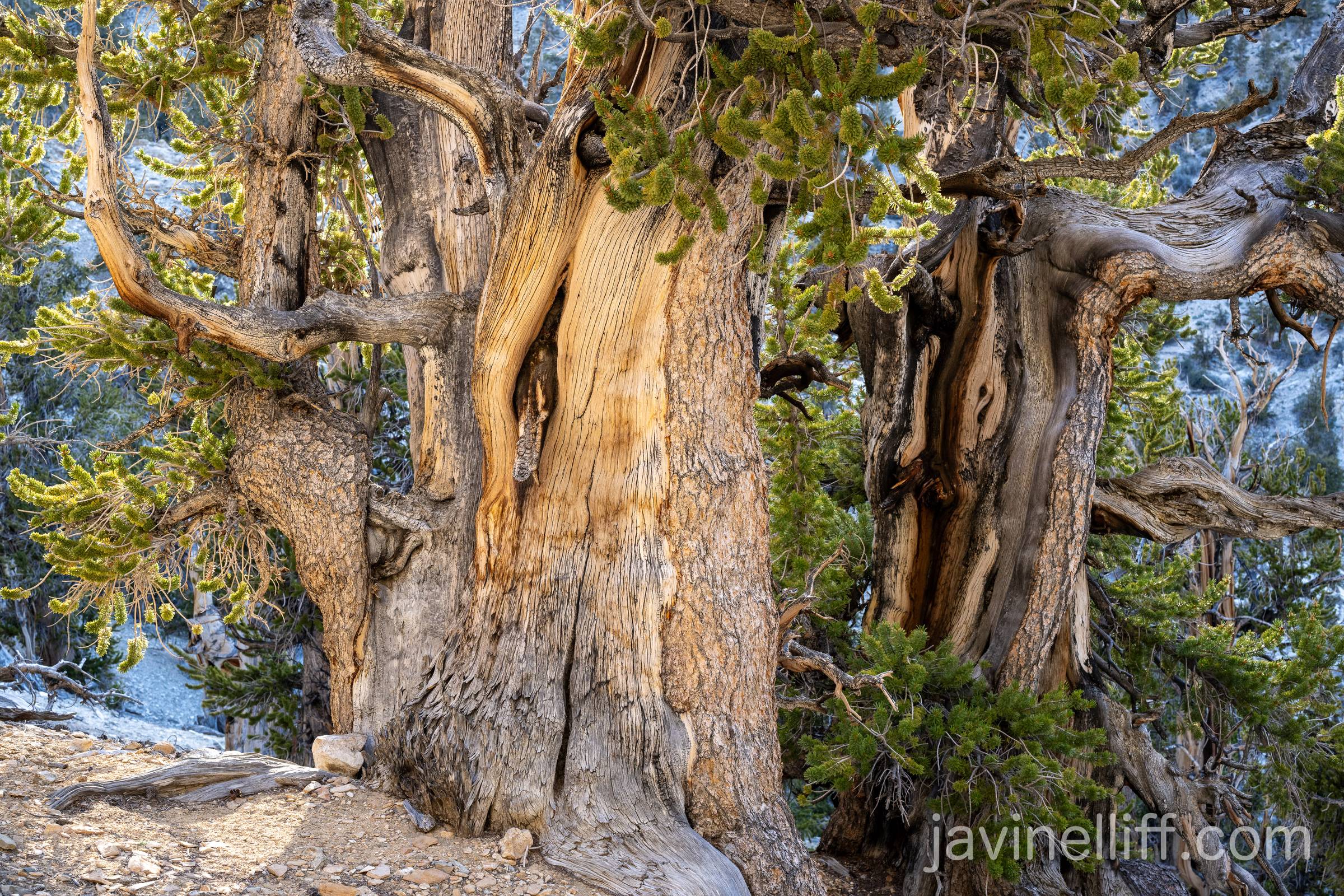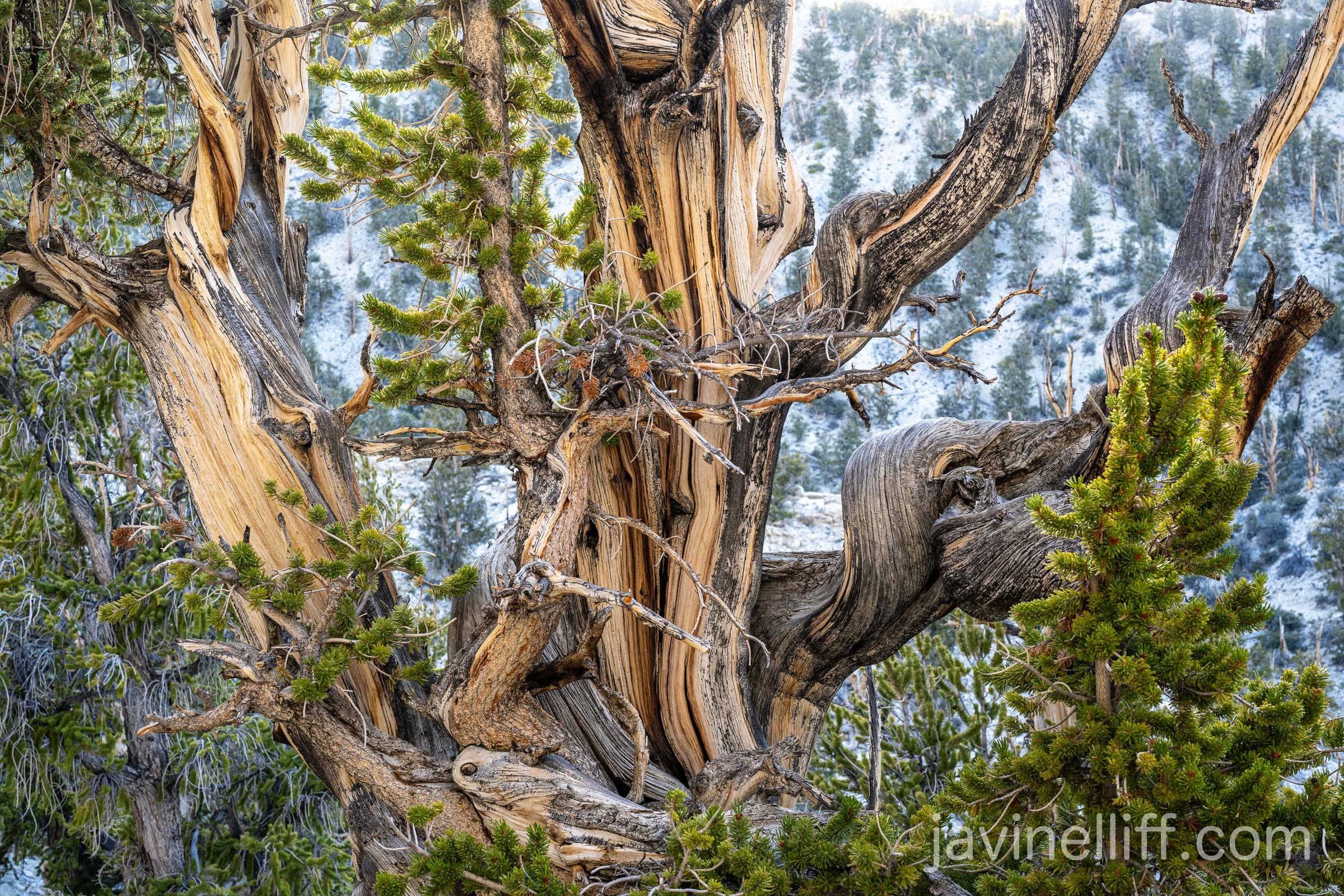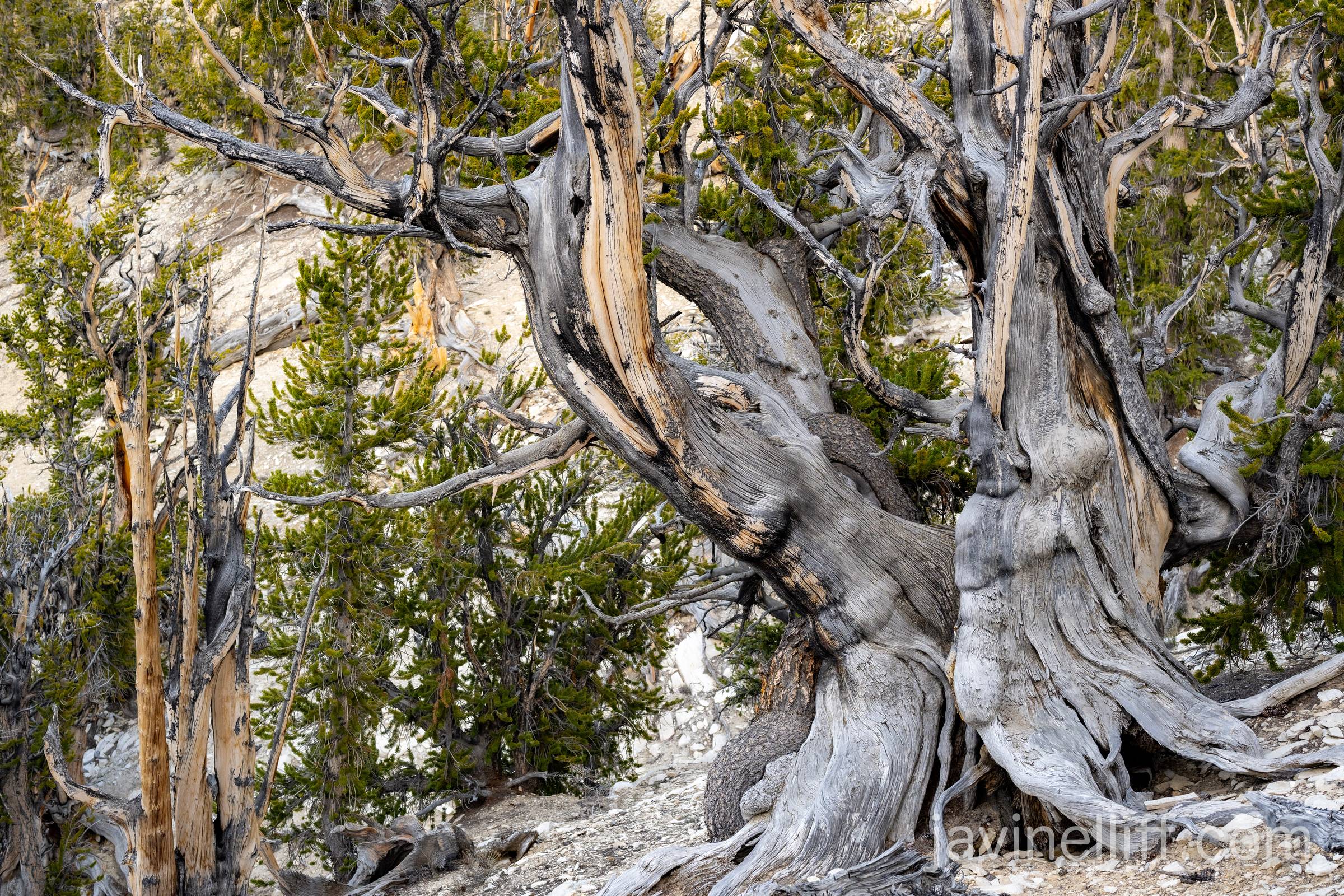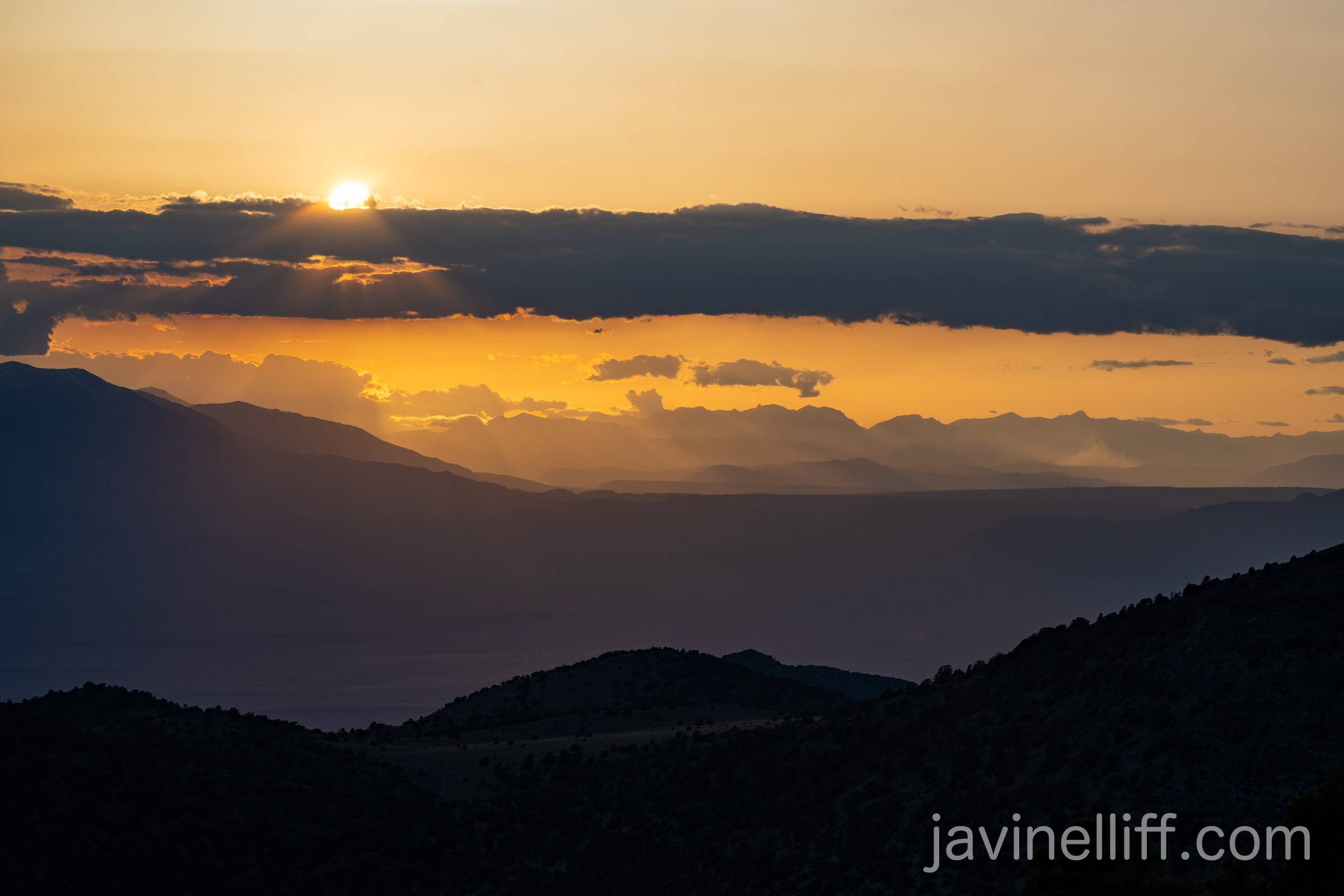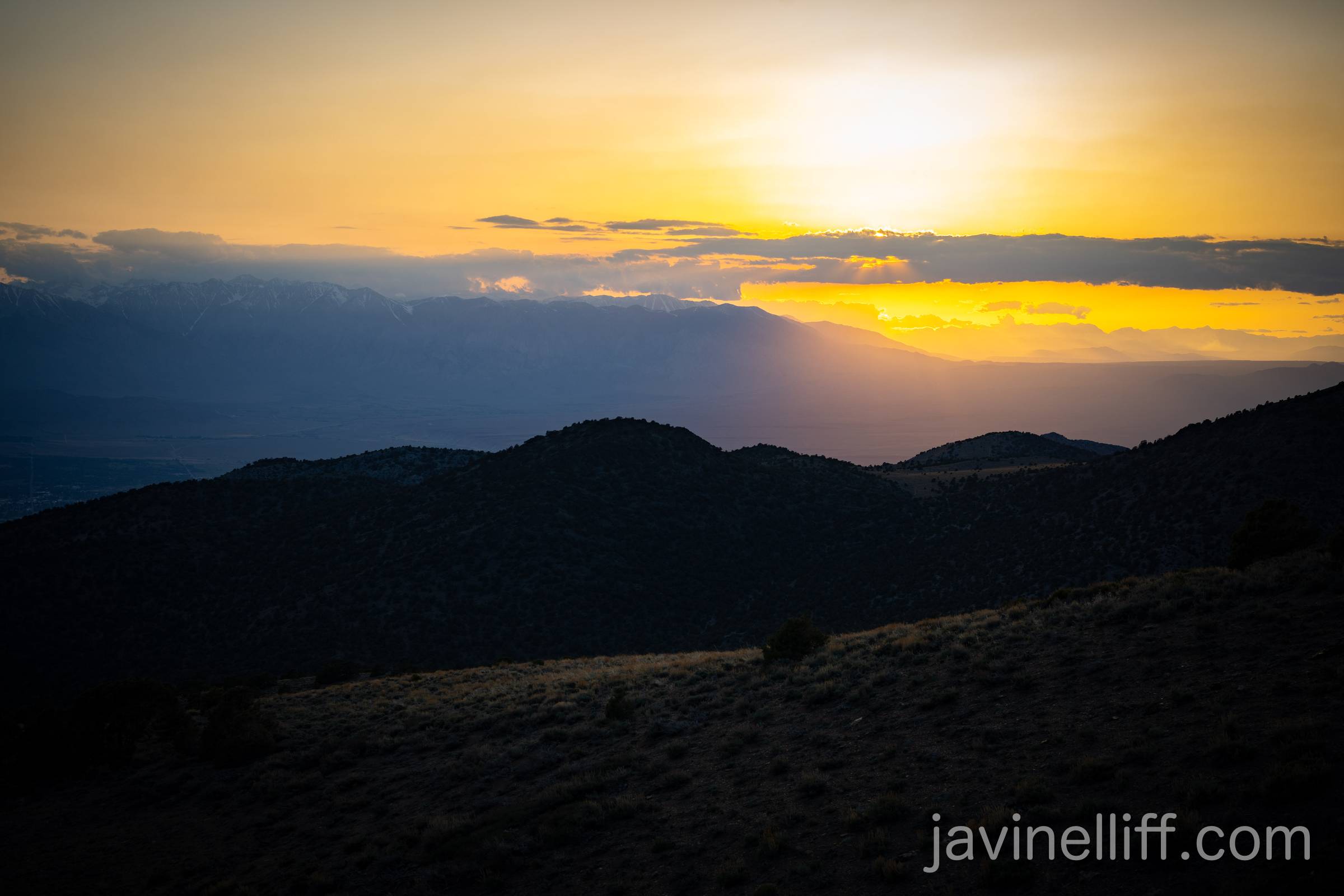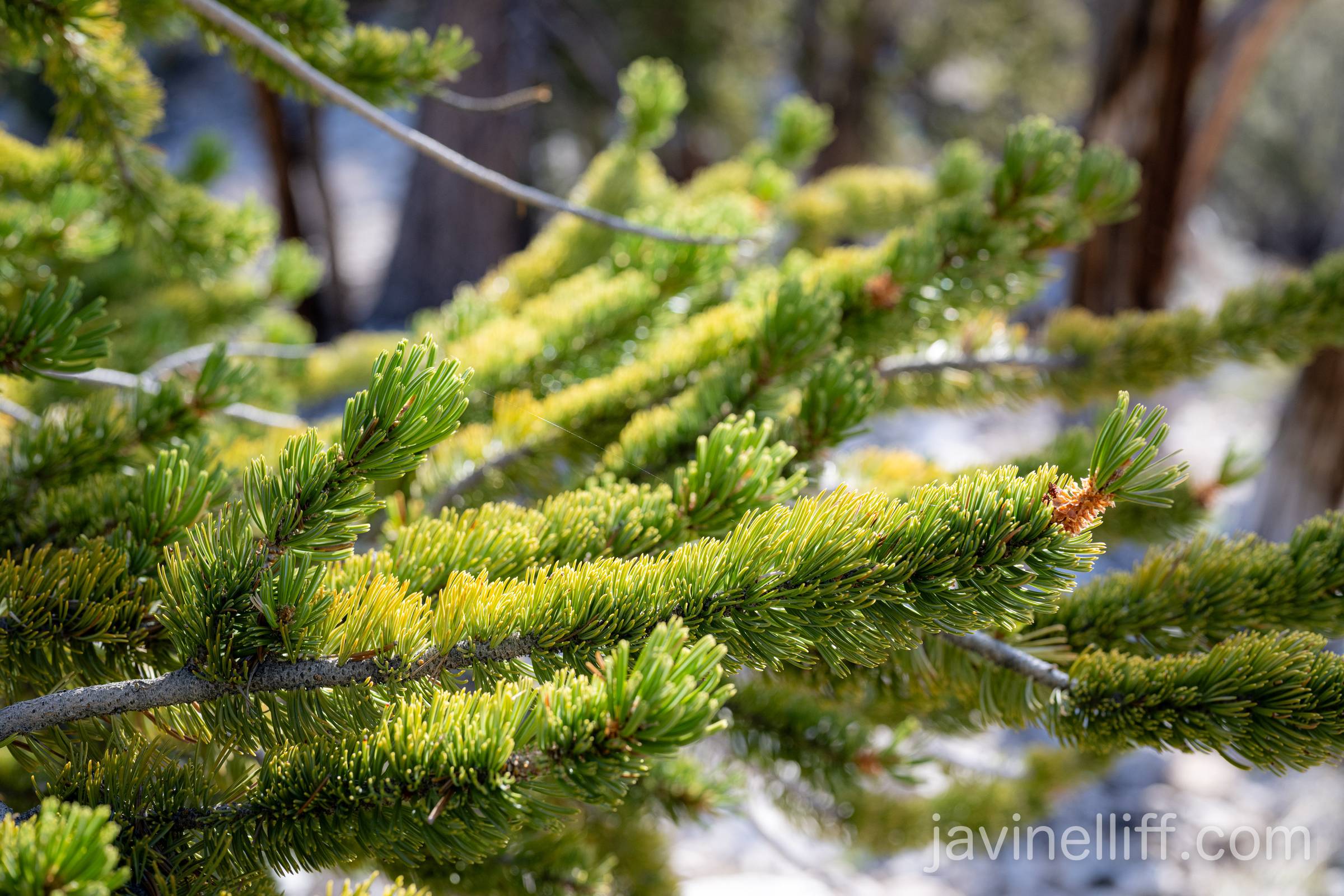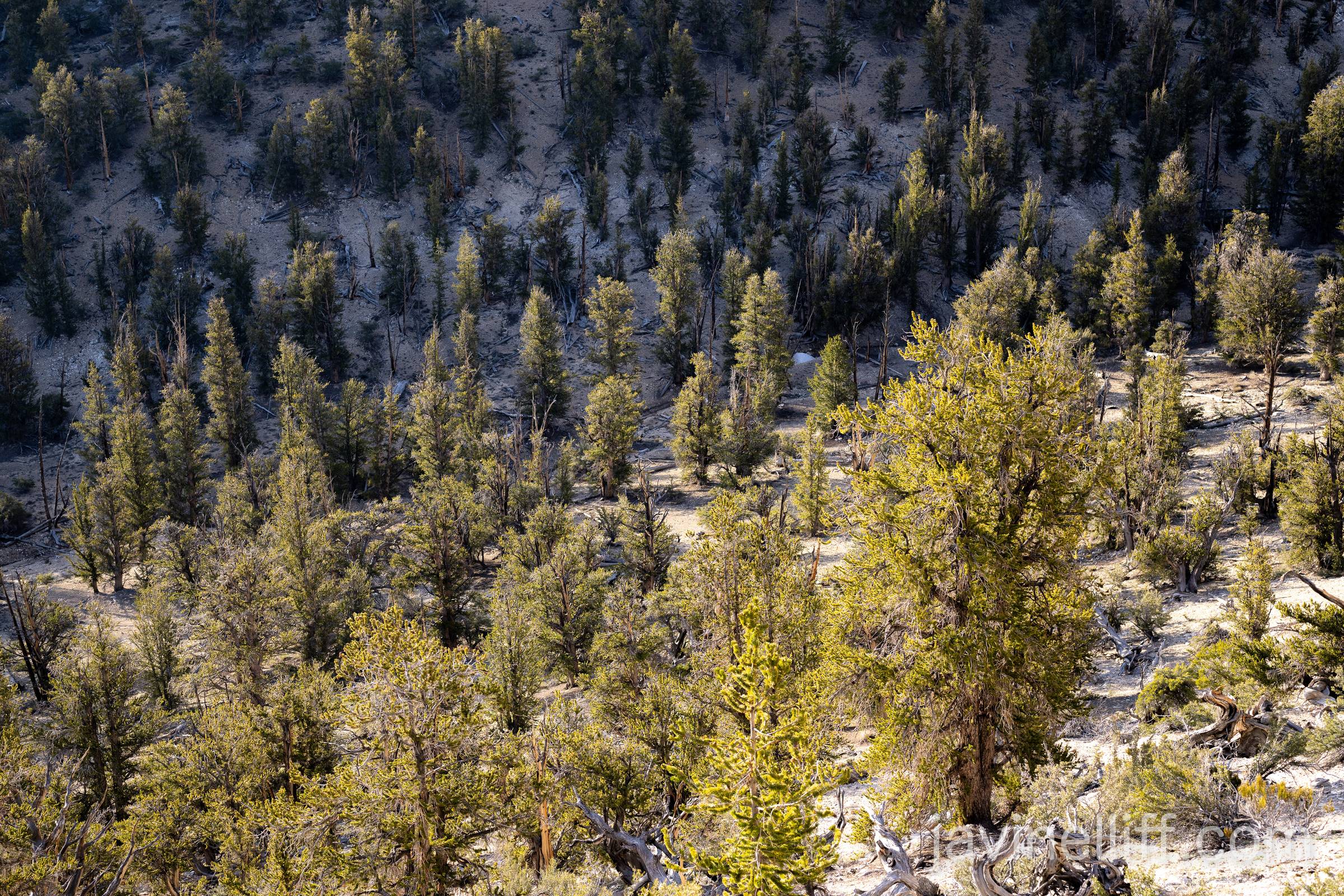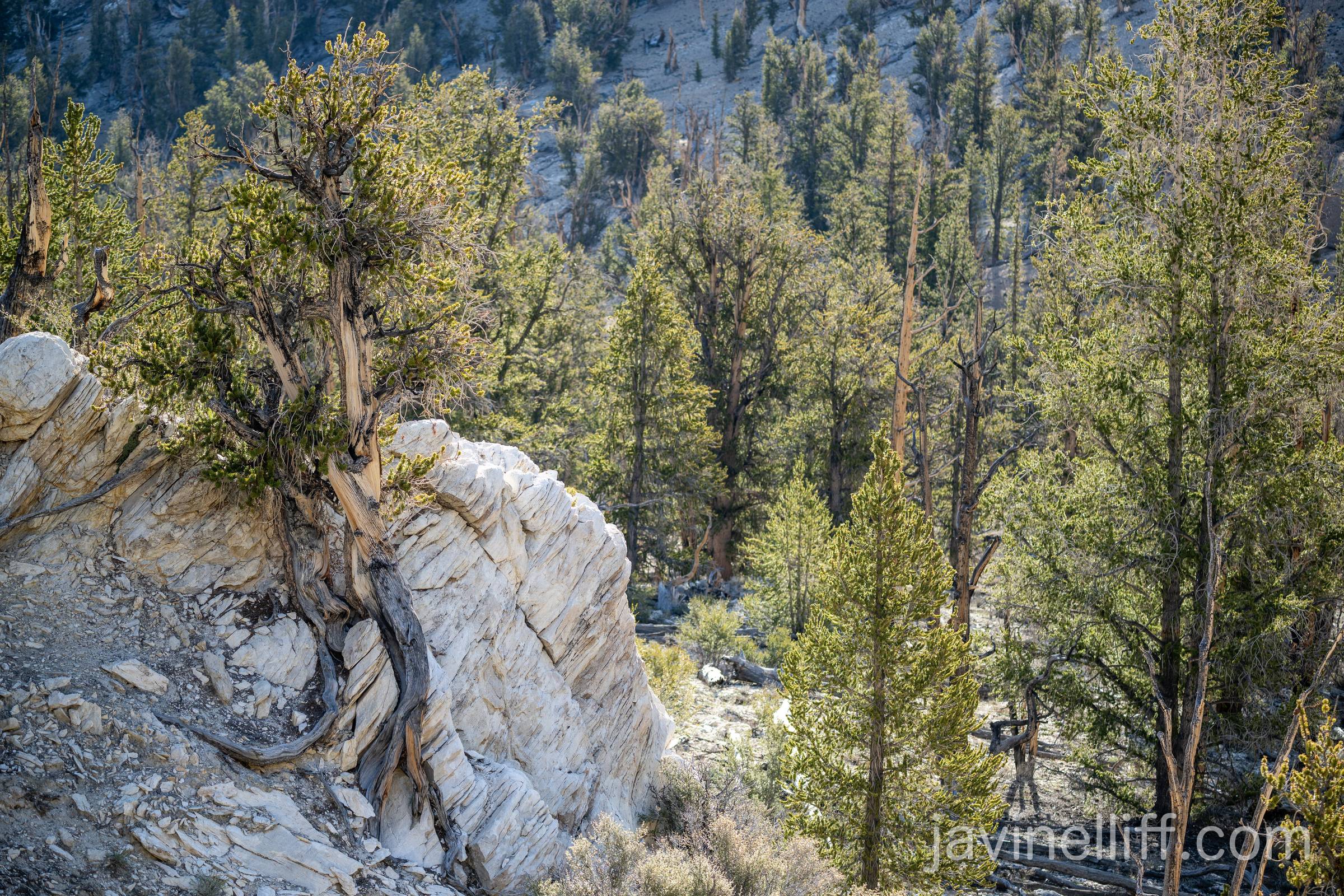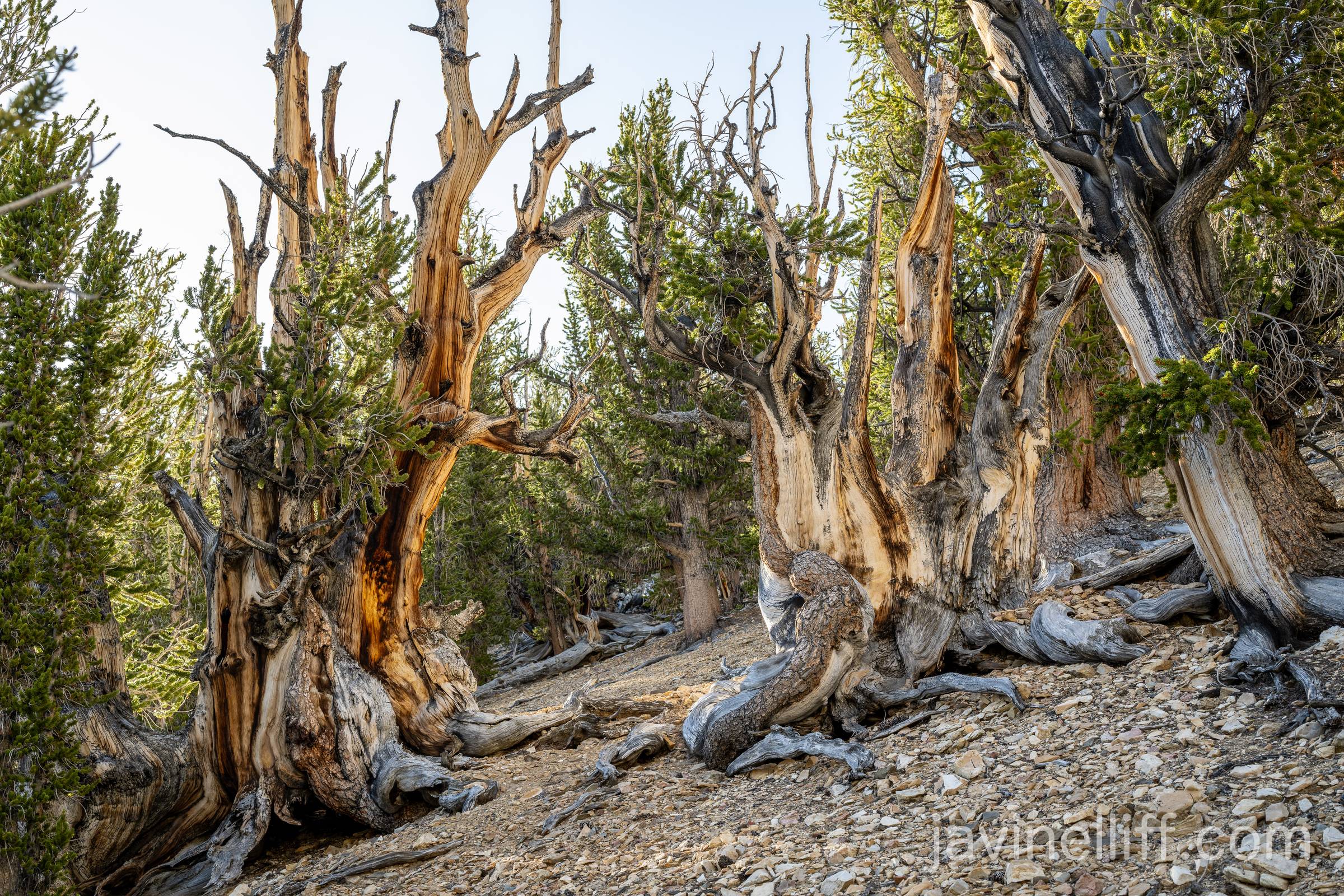May 22, 2024
Road Trip - Bristlecone Pines
A few years ago I read a book titled American Canopy: Trees, Forests and the Making of a Nation by Eric Rutkow. It opens with the story of a tree named Prometheus, a bristlecone pine which was cut down in 1964 by a graduate student in an effort to determine the tree's age. It turned out to be nearly 5,000 years old! Bristlecone pine trees are thus one of the oldest living non-clonal [1] species in the world. I had never heard this and would have guessed redwoods or sequoias to own that title. Surprisingly, these trees live in harsh environments above 10,000 feet in elevation.
I knew I had to witness these trees for myself, and planned my road trip accordingly. I drove from Nevada to the White Mountains of eastern California, and arrived to the Methuselah grove of bristlecone pines late in the afternoon.
In the morning, I returned and hiked the same trail one more time to see it with different light.
Non-clonal means each tree is a distinct organism. Some trees (such as aspen) grow new stalks from an underground network of roots and are therefore considered clonal. A grove of aspens can be considered a single organism, and one such colony in Utah is estimated to be 80,000 years old. ↩︎

